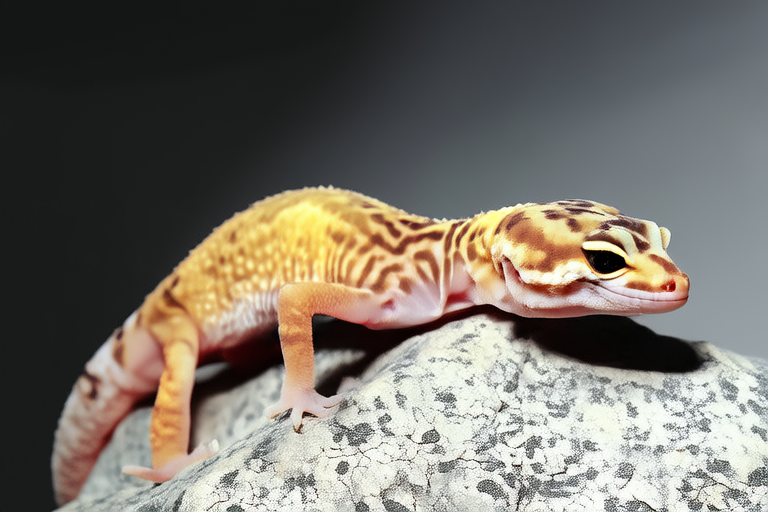Unveiling the Mystery Behind Leopard Gecko Colors and Patterns
Introduction:
Leopard geckos have become one of the most popular reptile pets worldwide due to their docile nature, ease of care, and striking appearance. Their vibrant colors and intricate patterns make them a favorite among both novice and experienced reptile enthusiasts. This article delves into the fascinating world of leopard gecko coloration and patterns, exploring the genetic basis behind their diversity and the intricacies involved in breeding these captivating creatures.
The Genetic Basis of Coloration and Pattern Variations:
The dazzling array of colors and patterns seen in leopard geckos is determined by genetics. Various genes influence different traits, such as high contrast markings, hypo patterns, or albinism. One of the key genes responsible for color variation is the Melanistic Gene (M), which results in darker, more intense pigmentation. Another gene, the Hypo Gene (H), leads to reduced pigmentation, creating a lighter, more muted appearance. The Albino Gene (A) produces a complete lack of pigment, resulting in a stunning white and yellow coloration.
Genetic interactions between these and other genes create a wide range of unique combinations. For instance, combining the Melanistic Gene with the Hypo Gene can produce animals with dark, contrasting spots against a light background, while pairing the Albino Gene with the Hypo Gene results in geckos with bright yellow and orange hues. Understanding these genetic interactions is crucial for breeders aiming to produce specific color and pattern outcomes.
Rare Morphs and Their Unique Characteristics:
Besides common color and pattern variations, there are several rare morphs that captivate collectors and enthusiasts alike. The Tremper Albino is one such example, characterized by its vivid red eyes and bright yellow body. Another rare morph is the Blizzard, which features minimal pigmentation, giving it a nearly white appearance. The Patternless morph, as the name suggests, lacks any discernible pattern, making it appear uniformly colored. Each of these rare morphs requires careful breeding practices to maintain their distinctive traits and prevent dilution through crossbreeding.
One particularly intriguing morph is the Enigma. Enigmas are known for their unique, swirling patterns and often display a combination of traits from multiple genetic lines. These geckos are highly sought after for their striking appearance and rarity. Breeding Enigmas involves a deep understanding of genetics and a commitment to maintaining the integrity of each line. As a result, Enigmas are often more expensive than standard morphs, reflecting both their rarity and the effort required to produce them.
The Breeding Process and Ethical Considerations:
Selective breeding plays a significant role in producing desired color and pattern outcomes in leopard geckos. Breeders carefully choose pairs based on their genetic makeup, aiming to enhance specific traits. However, this practice comes with ethical considerations. Overemphasis on rare morphs can lead to inbreeding, reducing genetic diversity and increasing the risk of health issues. Responsible breeders prioritize genetic health over novelty, ensuring that each generation remains robust and free from congenital defects.
To achieve optimal breeding outcomes, breeders must consider several factors. First, they need to ensure that both parents are healthy and genetically diverse. Second, they should monitor the offspring closely, removing any individuals showing signs of genetic disorders. Finally, they should engage in regular health checks and maintain proper environmental conditions, including temperature, humidity, and diet, to support the well-being of their geckos.
Caring for Leopard Geckos Based on Their Colors and Patterns:
Understanding the specific needs of your leopard gecko based on its color and pattern can greatly enhance its health and longevity. For example, albino geckos require higher levels of UVB lighting compared to standard geckos due to their lack of pigmentation. Providing appropriate lighting is essential to prevent health issues associated with insufficient vitamin D synthesis. Additionally, albino geckos may be more sensitive to stress and require a calm, quiet environment.
High contrast morphs, such as those featuring dark spots against a light background, benefit from distinct visual stimulation. Creating an enclosure with varied textures and colors can help stimulate their visual perception and overall well-being. Hypo-patterned geckos, on the other hand, may require less intense lighting and a more subdued environment to thrive. Ensuring the right balance of light, heat, and space is crucial for all morphs, but tailoring these aspects to suit specific traits can significantly improve the quality of life for your pet.
Proper nutrition is also vital for maintaining the health of your leopard gecko. Regardless of its color or pattern, a balanced diet rich in protein and calcium is essential. Offering a variety of live insects, such as crickets, mealworms, and dubia roaches, ensures that your gecko receives all necessary nutrients. Dusting these insects with calcium and multivitamin supplements further supports their dietary needs.
In conclusion, the world of leopard gecko coloration and patterns is both fascinating and complex. By understanding the genetic basis behind their diversity and the ethical considerations involved in selective breeding, we can appreciate the beauty and uniqueness of these captivating creatures. Providing optimal environments tailored to their specific needs ensures that our pet leopard geckos enjoy long, healthy lives. Whether you’re a seasoned enthusiast or a first-time owner, taking the time to learn about your gecko’s color and pattern can deepen your bond and enrich your experience as a responsible pet owner.
